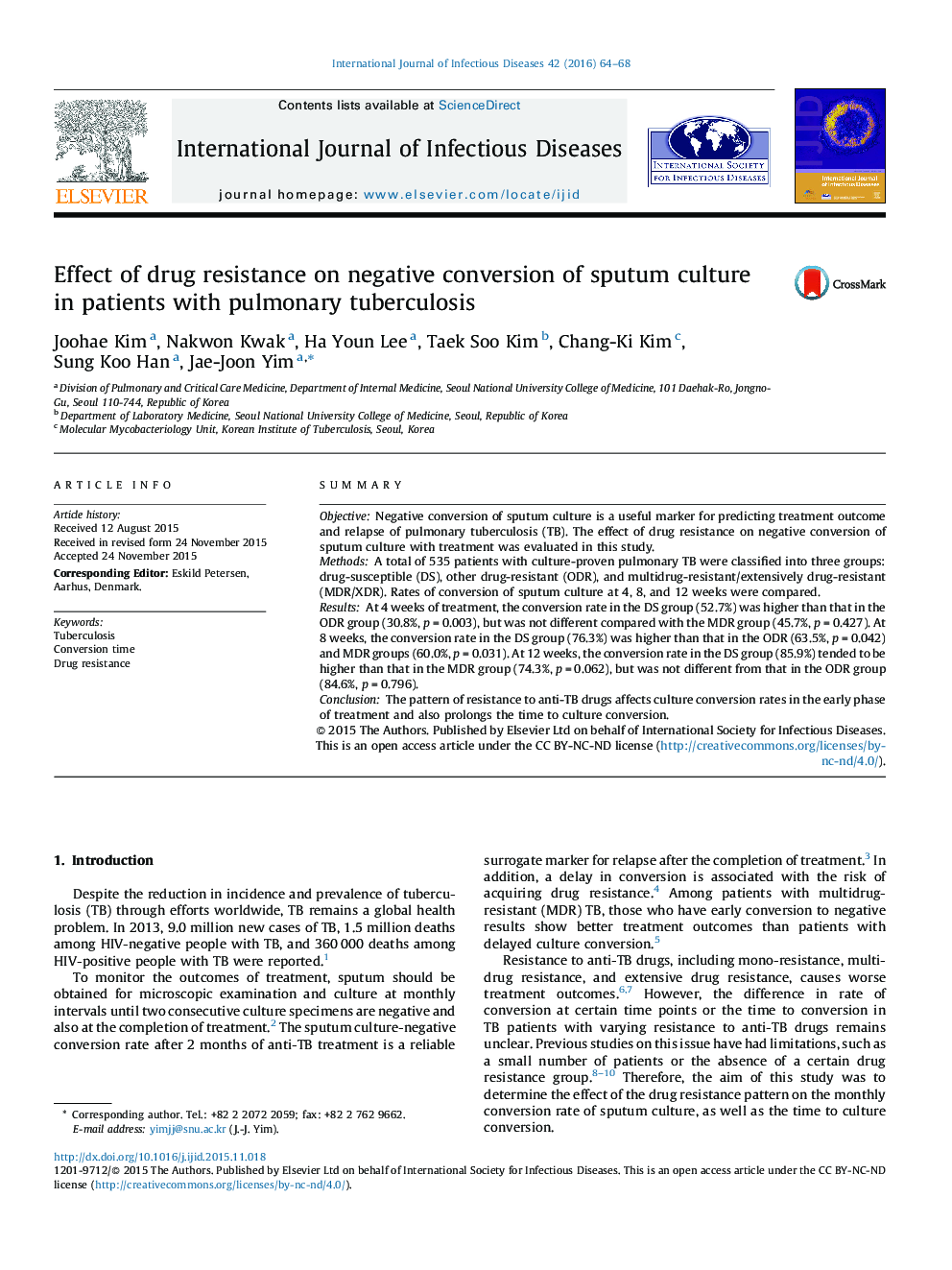| Article ID | Journal | Published Year | Pages | File Type |
|---|---|---|---|---|
| 3361691 | International Journal of Infectious Diseases | 2016 | 5 Pages |
•Resistance to anti-tuberculosis (anti-TB) drugs lowers culture conversion rates in the early phase of anti-TB treatment.•The effect of the drug resistance pattern on conversion of sputum culture is most evident at 8 weeks.•Resistance to anti-TB drugs prolongs the time to culture conversion.
SummaryObjectiveNegative conversion of sputum culture is a useful marker for predicting treatment outcome and relapse of pulmonary tuberculosis (TB). The effect of drug resistance on negative conversion of sputum culture with treatment was evaluated in this study.MethodsA total of 535 patients with culture-proven pulmonary TB were classified into three groups: drug-susceptible (DS), other drug-resistant (ODR), and multidrug-resistant/extensively drug-resistant (MDR/XDR). Rates of conversion of sputum culture at 4, 8, and 12 weeks were compared.ResultsAt 4 weeks of treatment, the conversion rate in the DS group (52.7%) was higher than that in the ODR group (30.8%, p = 0.003), but was not different compared with the MDR group (45.7%, p = 0.427). At 8 weeks, the conversion rate in the DS group (76.3%) was higher than that in the ODR (63.5%, p = 0.042) and MDR groups (60.0%, p = 0.031). At 12 weeks, the conversion rate in the DS group (85.9%) tended to be higher than that in the MDR group (74.3%, p = 0.062), but was not different from that in the ODR group (84.6%, p = 0.796).ConclusionThe pattern of resistance to anti-TB drugs affects culture conversion rates in the early phase of treatment and also prolongs the time to culture conversion.
